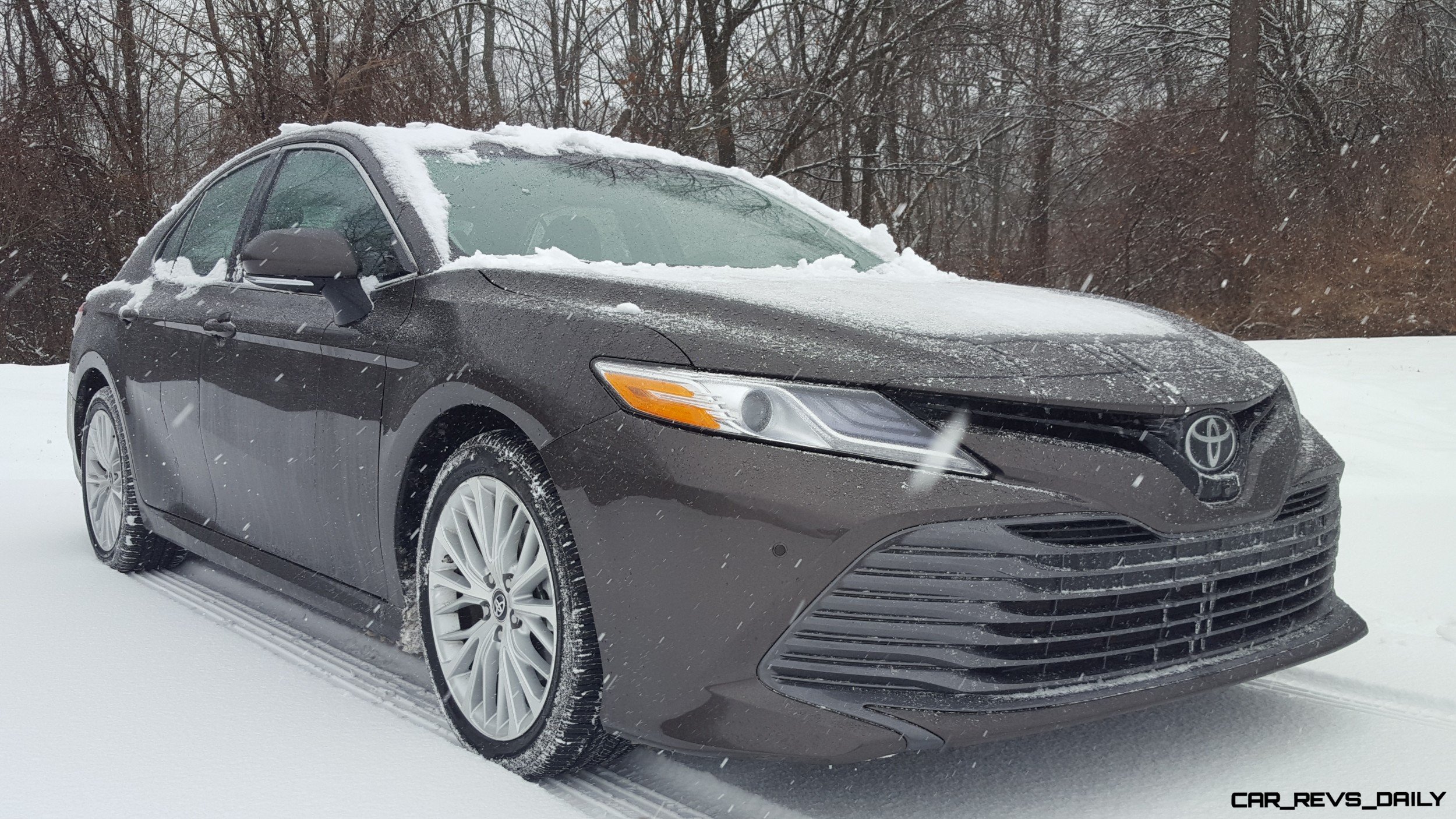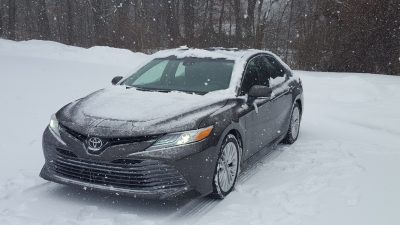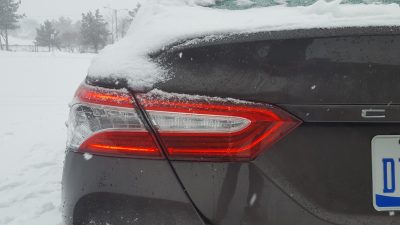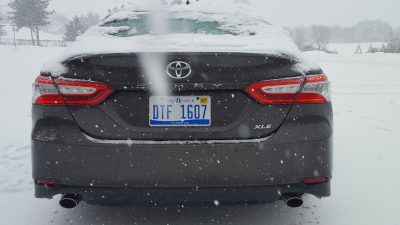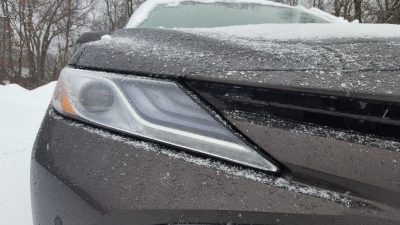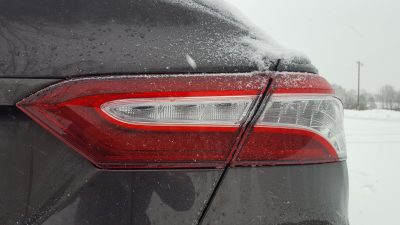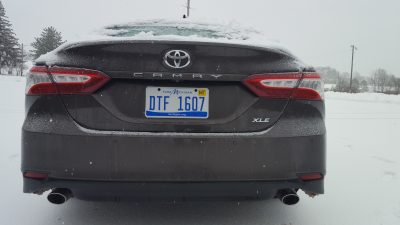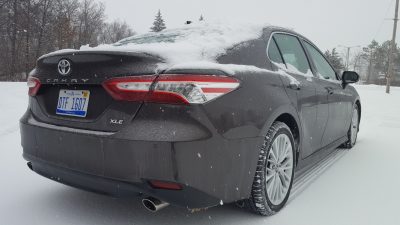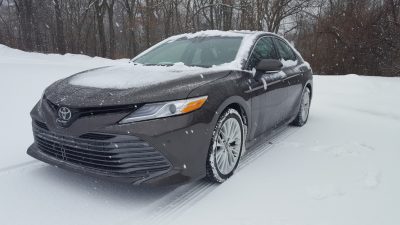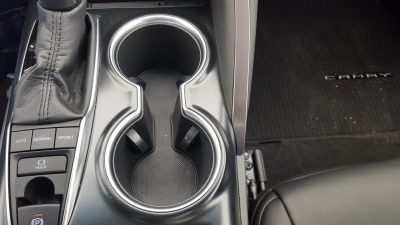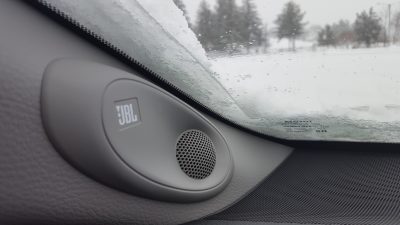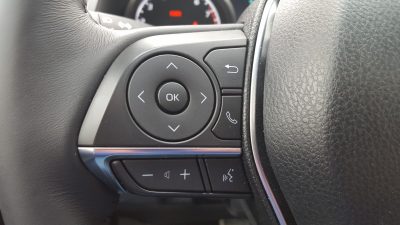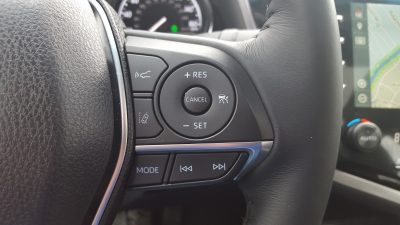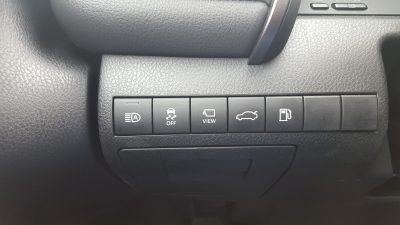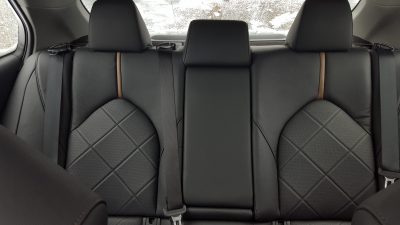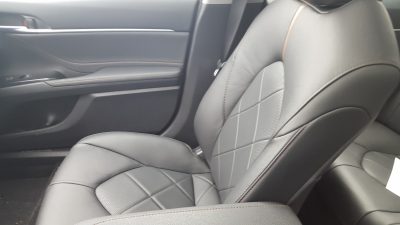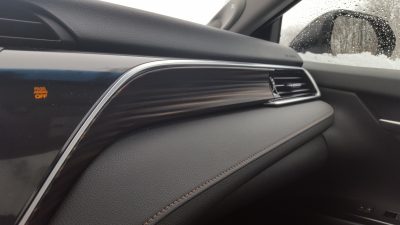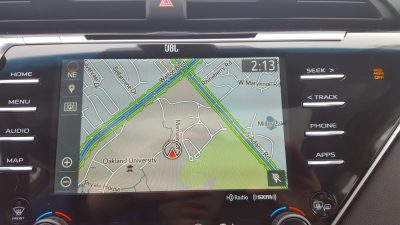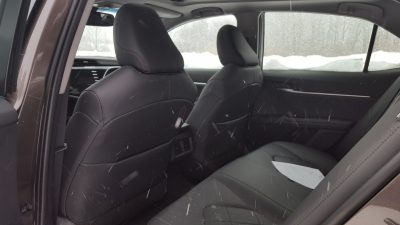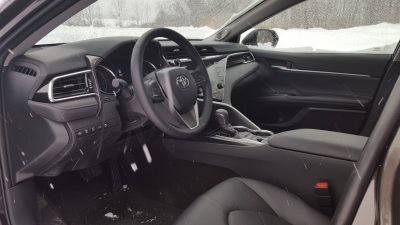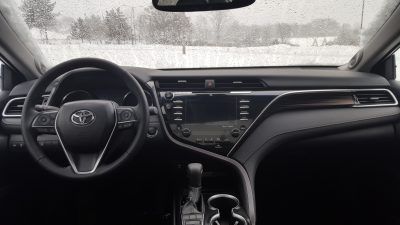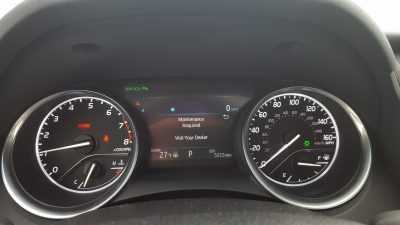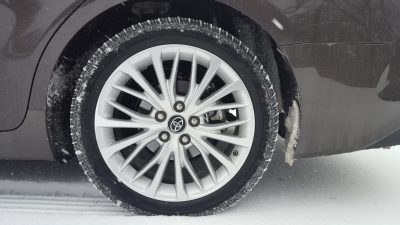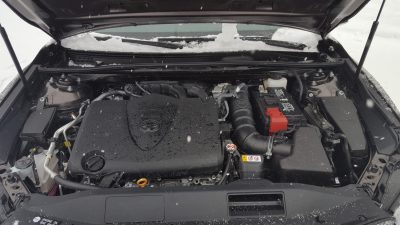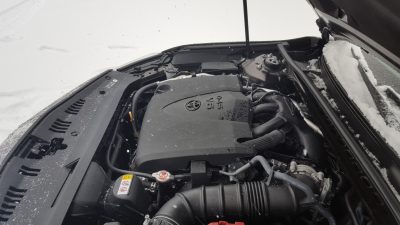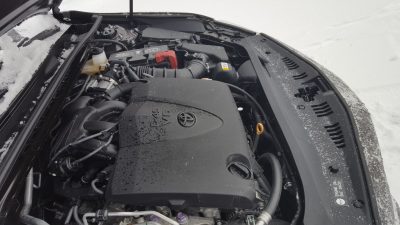When we last got behind the wheel of the 2018 Honda Accord, we remarked about the rivalry between it and the Toyota Camry. Both cars have been gunning for each other in the sales race for the past few decades, and now we get to view the other side of the fence with the 2018 Toyota Camry. Can the Camry still retain its benchmark status against the rest of the segment? Or has it lost its spot on the sales throne to its bitter enemy?
The exterior styling of the 2018 Camry is arguably its most potent talking point. Once known for how boring it looked versus its finer attributes, Toyota engineers went all out to banish this perception, and threw all their chips on the table when it came to reinventing the Camry’s new look. The end result depends on what flavor of Camry you get. XSE grade cars are the equivalent of wearing a spiked collar and a big mohawk at a family gathering and that trim level certainly ups the Camry’s sporting pretensions versus other more mundane sedan offerings.
For XLE grade cars like our tester on the other hand, the look is somewhat more subdued. The front fascia is defined by a big lower front grille that reminds us of a cross between the bigger Toyota Avalon and Grandma’s Hoover vacuum cleaner. Thankfully, the headlights look more aggressive than before, and the side profile transitions nicely into a clean rear end with slick looking tail lights, and an attractive set of dual exhaust pipes. Considering what Toyota designers had on their plate when it came time to revamp the car for 2018, we think that they made a solid effort, but when compared to the Accord, its the minor details that cause the Camry to fall just short of stealing the Honda’s thunder.
The interior of the 2018 Camry also sees extensive revisions, with the slab sided motif pitched in lieu of a more three dimensional look that is bisected by a wave like trim piece. Meanwhile, the passenger side of the dash curves away to help create an enhanced sense of spaciousness. The touchscreen infotainment system is housed in a gloss black region that infuses the slick look of various smartphones with just enough physical buttons to retain decent levels of functionality.
Toyota’s latest version of its Entune layout makes its debut here, and perhaps its biggest talent is the company’s app based navigation system. The trick navigation system works through a connected Apple or Android equipped smartphone equipped with the Scout app. Scout provides drivers with real world maps, as well as turn by turn directions. However, Toyota’s attempts at a novel solution cannot hide the fact that even after three iterations of Entune, the system still does not support either Apple CarPlay or Android Auto. This is a big handicap especially as both formats are rapidly becoming standard across the entire marketplace.
The rest of the cabin is a noticeable improvement over the old Camry. The quilted style leather seats in our tester did not look quite as upscale as those in the Accord, but they made up for it by being comfortable thrones to spend time in, and we were pleased with the good amounts of front leg and headroom on hand. Rear occupants have equal amounts of generous real estate, and can also stretch out and relax on long road trips. Our lone complaint is the sizable gulf in interior quality that exists between higher grade Camrys and their lesser counterparts. Wheras XLE and XSE models feature higher quality plastics and the fore-mentioned leather seats, SE and LE grade models feature cheap plastics, and don’t hold up well against similar grade Accord, Malibu, and Fusion models.
While its exterior and interior appointments are marked improvements over the old model, the biggest surprise for 2018 is the massive upgrade that has taken place under the Camry’s hood. At one time the notion of a Camry offering anything remotely close to satiable performance was widely considered automotive heresy (a reputation Toyota did not mind maintaining on occasion.) But we are pleased to report that at long last, Toyota has finally injected the Camry with some muscle. A 2.5 liter 203 horsepower four cylinder is the standard engine, and is more focused on efficiency versus outright performance. For buyers that opt for either the sport flavored XSE or XLE grade cars like our tester, they gain access to a second more compelling engine choice. While V6 engines have appeared in prior iterations of Camry, the 3.5 liter in the 2018 model is perhaps the most potent engine ever offered in a Camry. Good for a solid 301 horsepower, it helped launch our tester with authority, and it added some much needed sizzle to the Camry’s otherwise ho hum driving traits, especially with sport mode engaged.
Speaking of sport mode, the eight speed automatic in our tester is the slice of apple pie that keeps the fun alive thanks to its smooth shifts, as well as the reasonable accuracy that exists when it is manually shifted with the steering wheel mounted shift paddles. The Camry is still not the best dance partner to have when the roads get twisty, but at least it delivers commendable handling thanks to a new rear suspension, as well as a stiffer chassis. The end result is a controlled experience, with the steering alternating between parking lot grade lightness, and pleasantly weighted precision when it came time to push the Camry to its limits. Braking was stable and composed with our tester delivering a balanced feel through the brake pedal, with acceptable levels of nose dive. A sport sedan it isn’t, but it is good to see that the 2018 Toyota Camry now has the swagger to backup its sporting ambitions.
Pricing for the 2018 Toyota Camry starts at $23,495 for the base L four cylinder model. The pricing ladder as well as the flavors available to Camry buyers increase from there, with the sport oriented XSE starting at $29,000. Meanwhile, range topping XLE V6 models like our tester start at $34,400, with our lightly optioned tester reaching a grand total of $37,808. That’s pretty steep for a Camry, but XLE buyers can shave some of the financial dressing off the MSRP by either going for the base $28,450 XLE four cylinder, or the $32,250 XLE Hybrid.
Either way, the 2018 Toyota Camry has the goods to still remain a top contender in the family sedan segment but look for its new-found vigor and poise to lure in new buyers that might have once dismissed the Camry from their consideration list.

Carl Malek has been an automotive journalist for over 10 years. First starting out as a freelance photographer before making the transition to writing during college, his work has appeared on numerous automotive forums as well as websites such as Autoshopper.com.
Carl is also a big fan of British vehicles with the bulk of his devotion going to the Morgan Motor Company as well as offerings from Lotus, MG, and Caterham. When he is not writing about automobiles, Carl enjoys spending time with his family and friends in the Metro Detroit area, as well as spending time with his adorable pets.

